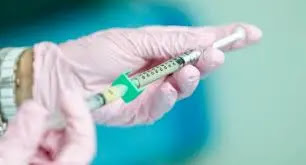3 groundbreaking medical innovations to prevent Covid-19, which will work in other areas as well
3 Groundbreaking Medical Innovations In Thehe Prevention Of Covid-19 With the advent of Covid-19, a number of technologies in the medical field have had the opportunity to prove themselves for the first time. Discussion on 3 such innovations.
Vaccine
Post Index:
1. Genetic Vaccine
2. Wearable Technology And Early Illness Detection
3. A New Way Of Discovering Medicine
Genetic Vaccine
About 30 years ago, scientists for the first time injected genes from a different species of pathogen into rats to create immunity. Like many new discoveries, these first gene-based vaccines had some complications.
But the researchers gradually overcame the problems. Genetically modified vaccines as needed to enable vaccines to produce more effective immune responses.
By 2019, academic labs and biotechnology companies around the world have developed dozens of promising mRNA and DNA vaccines for infectious diseases as well as cancer.
Then, when the spread of Covid-19 began, mRNA vaccines in particular were put into practice. It found that the MRNA vaccine was 94% effective, exceeding the highest expectations of health officials.
The DNA and mRNA vaccines have many advantages over other vaccines. For example, only genetic code from pathogens or germs is used to make these vaccines. As a result, vaccines do not require whole viruses or bacteria. It also takes a long time to make a conventional vaccine.
Scientists, on the other hand, can invent a DNA or mRNA vaccine in a matter of days once they have a genetic sequence of a new pathogen. The vaccine can then go on clinical trials within a few weeks and millions of doses can be made within a few months. The same thing happened with the coronavirus.
Experts hope that gene-based vaccines will one day create vaccines for malaria or HIV, cure cancer, and replace them with less effective conventional vaccines.
Indeed, many DNA and mRNA vaccines for the treatment of various infectious diseases, chronic infections, and cancer are already in development and in clinical trials.
Wearable Technology And Early Illness Detection
During the epidemic, researchers have taken full advantage of the spread of smartwatches, smart rings and other wearable or wearable health and wellness related technologies.
These devices can measure a person’s body temperature, heart rate, amount of work and other factors. With this information, researchers have been able to identify the Covid-19 infection. Even before users noticed, the researchers found out if they had any symptoms.
Even after the epidemic, more people will use wearable technology, and devices will continue to evolve.
The experience gained by researchers during the epidemic on how to use wearable technology for health check-ups will also help in tackling future outbreaks.
In this case, not only the virus epidemic, but also other possible events such as food poisoning or seasonal flu outbreak, etc., this experience will be useful.
But wearable technology is still used only by the rich and the young. So researchers, technology companies and society as a whole need to address this limitation.
A New Way Of Discovering Medicine
Protein is a kind of molecular machine that keeps your cells active. You get sick when the protein is ineffective or attacked by a germ.
Most drugs treat the disease by inhibiting the activity of this defective or infected protein. So a logical way to invent new drugs to treat a disease is to study the genes and proteins that are involved in that disease.
Based on this, researchers are now studying the connections and interactions between proteins, which they call protein networks. Over the years, they have been exploring the potential of these networks to find more ways to prevent disease through drugs.
After the coronavirus epidemic hit, researchers tried to find a way to quickly cure the disease. So they first began to map the vast network of human proteins infected with the SARS-Cove-2 virus so that it could be replicated.
Once they have created this map, they identify proteins in the network that can be easily targeted by drugs. Eventually they successfully found connections, from which new drugs for this disease could be discovered.
However, with the idea of mapping infected proteins to discover new drugs, only diseases like coronavirus can be dealt with. Instead, it is now being used in other diseases, including cancer, nervous system damage, and mental illness.

